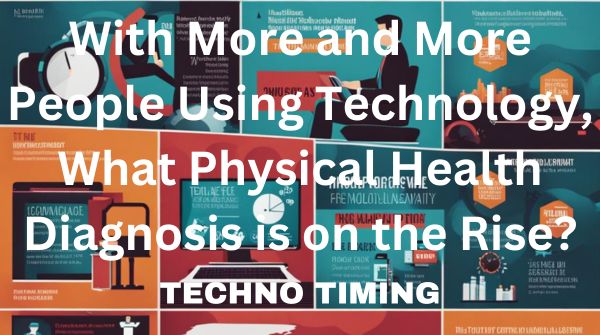Let me explain what it is all about: With More and More People Using Technology, What Physical Health Diagnosis is on the Rise? With the passing of decades, humans are exploring and finding new ways to make their lives easier simply by trying to create a less labor-intensive life, and it is helping us in our day-to-day lives. We all reside in an internet-connected world with plenty of technological benefits, but every coin has two sides. If there are millions of pros to technology on the other side, we neglect the cons. With the advancement of technologies, we are facing some psychological diagnoses that are affecting our bodies and we aren’t aware of them.
In today’s blog, we are going to discuss some of the psychological and physical diagnoses caused by adapting health technology to our regular lives.
Let’s start with the Psychological Disease.
Anxiety and Depression
The people we interact with online, including friends, family, and relatives, enjoy hearing about our daily lives. Social media platforms connect people worldwide, but those who engage in heavy and frequent social interaction may suffer alone. Although social media platforms are independent spaces where we can freely share our thoughts, people sometimes abuse them to vent their anger or to cause mental harm to others, leading to the rising prevalence of depression
Insularity
One advantage of the Internet and technology is having everything at your fingertips, but it also divides us from the real world. Teenagers, or better yet, people between the ages of 19 and 32, are most dependent on technology; from cooking food to buying clothes, everything is an instant task, and yes, Why do we need to go outside when we can get everything while quickly scrolling on a cellphone. According to the research, those who are very active on social media did not engage in cultural activities more than those who were not.
Physical Diagnosis
Lack of Sleep
One of the main reasons for using technology such as mobiles, computers, or e-readers is that it affects our sleeping cycle. The disturbance of the blue light makes it difficult for someone to fall asleep or makes them feel lazy.
Musculoskeletal Issues
The way that many people use their computers and mobile devices could also be contributing to poor posture. It could eventually result in musculoskeletal problems.
Many technologies encourage a posture known as “down and forward,” where individuals lean forward and look down at the screen.
The neck and spine may be under unnecessary strain as a result.
The findings showed that while some individuals continued to experience long-lasting symptoms, those effects were generally short-lived.
Eye strain
Someone can pay attention to technologies like mobile phones, computers, and tablets for a while. It may lead to eyestrain. Two symptoms of digital eye strain are blurry vision and dry eyes.
In addition to causing eye discomfort, eye strain can cause headaches, neck pain, or stiff shoulders.
Eye strain can be caused by multiple technology factors like continuous use of the screen, display glare, screen radiances, viewing from a distance or up close, sitting in the wrong posture, and hidden vision problems.
Being Inactive Physically
The excessive use of tablets, laptops, and smartphones can result in a lack of exercise. For instance, a study found that 38% of parents were concerned that their kids were not getting enough exercise because of too much screen time.
An increased risk of several health conditions, such as obesity, heart disease, cancer, and diabetes, has been associated with spending too much sedentary time. The COVID-19 pandemic, which caused people to stay indoors, relied more on technology.
Bottomline
The lifestyle has changed due to the recent technological boom. Technology has many benefits, but there are also potential drawbacks.
Any person who’s unsure of how technology affects them might consider taking measures to reduce their device use and screen time, and then reevaluate how they feel both with and without devices.
Also Read: A Guide for People with Hearing Disabilities Can Listen to Narrations Today
